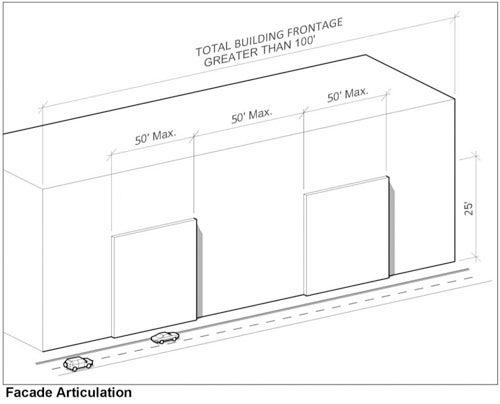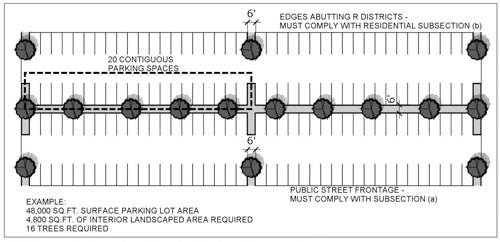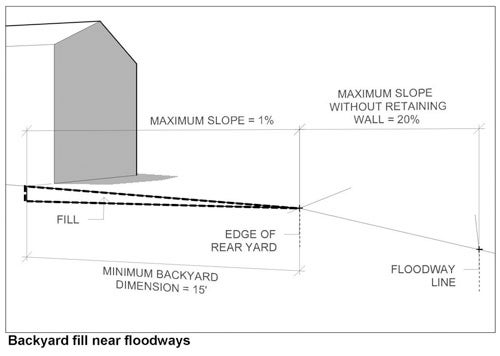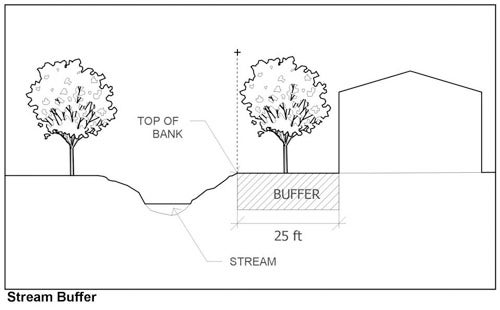Zoning Code Commission X-Changes wind down
Philadelphia’s Zoning Code Commission has completed its final two Stakeholder X-Change outreach meetings about development standards and parking. As with previous X-Changes, the meetings offered space for robust discussion of the code revision. No real surprises emerged—Craig Schelter of the Development Workshop reiterated his dislike of many new development and parking standards, for example—although a number of commissioners expressed concern with the ramifications of grandfathering in nonconformities.
On April 27, the X-Change offered a forum for the discussion of development standards.
“This is new to the Zoning Code. These are citywide standards that will be applied,” ZCC Executive Director Eva Gladstein said at the April 27 meeting. Her overview of development standards primarily focused on form and design regulations, transit-oriented development (TOD), open space and natural resources, and landscape and tree requirements.
Buildings with more than ten units, and commercial and institutional buildings with a lot or floor area of over 10,000 square feet have specific requirements:
- The entry door must face a public street.
- If the lot is adjacent to open space, such as a publicly accessible waterfront or park, access to that space must be permitted.
- Mechanical equipment must be screened.
- The facades of larger buildings must be articulated. For the first two stories, every 50 feet, some three-dimensional design feature must create variation in texture.
The code also introduces transit-oriented development, a concept to promote density, a different mix of uses, or access to mass transit in certain areas. The latest draft of the code includes three types of nodes:
- Destination—an area that draws people from across the Philadelphia region, and may be more significant in terms of size and density than other nodes.
- Neighborhood center—a neighborhood center, that draws people from across an area of the city because of its transit hub, neighborhood commercial amenities, or both.
- Park and ride—at the ends of various train lines, where land may be available for parking, to promote the use of transit to bring people downtown to work.
Originally, four nodes existed. The “infill” node was folded into “neighborhood center” in the redline draft of the code.
A map of possible TOD nodes was in consolidated drafts of the code issued in September, which prompted widely varying responses. In Kensington, for example, the East Kensington Neighbors Association strongly opposed identifying the York-Dauphin El station as a node. Mary Zagar Brown, who works for the Archdiocese of Philadelphia on community development in the same neighborhood, wrote a letter to Gladstein asking that the next station up, Huntington, be mapped as a node.
The map has been removed from the draft, and the ZCC will work with the Planning Commission to identify appropriate nodes.
“We realized that it was not something we should do in a hasty manner,” Gladstein said at the meeting.
The new code also expands the watershed protections from the Wissahickon watershed, which was established in 1974, to the rest of the city’s steep slopes near flowing water. The intent is to prevent development on very steep slopes, and to control earth removal on lesser slopes. They add a 50-foot buffer for streams, ensuring that no impervious structures exist. The new code also carries over the existing standards on storm water management, flood protection, and flood plains.
The new code allows for self-certification—which means that a licensed architect or similar professional will certify that the plans for a new building or development abide by the landscape requirements. Exempt from the requirements are single family and two-family homes, urban agriculture sites, and parks. The regulations apply to lots over 5,000 square feet.
“Because a lot of it is new material, it’s an example of one of the ways we’re trying to modernize the code,” Gladstein said.
Schelter, of Development Workshop, voiced his group’s continuing opposition to many of the development standards.
“What you’re going to create is a situation where developers want variances on that,” Schelter said, referring to facade articulation in particular.
“This is something that doesn’t belong in the code. It belongs in the administrative manual as a guide. We think it’s going to be a big detriment to people looking to invest in Philadelphia,” Schelter said.
“What kind of building doesn’t have articulation?” asked Kiki Bolender, a partner at Schade and Bolender Architects and a volunteer with the Citizen’s Planning Institute. “I just can’t picture the case where it would be a big problem, except for a psychological problem.”
“To take it out and put it as a guide is to kill it. A guide is not enforceable,” said Tim Kerner of the Center City Resident’s Association.
“It’s really, really basic,” said Commissioner Graciela Cavicchia. She asked Schelter, “Why will having these minimalist standards affect investment?”
“Because if you don’t follow them you have to go to ZBA for a variance,” he replied.
“May I just register that Craig has a standing objection to all design requirements?” said Kerner.
“This document is a compromise,” Cavicchia said. “A lot of people gave up a lot.”
“To agree with you totally, Craig, is to say you don’t want standards,” said Sam Little of the Logan Square Neighborhood Association.
“This design standard is so light that no developer in his right mind would seek a variance,” Kerner said.
Gordon Cohen asked about the new steep slope protections. He said that the language of the new code specifies that the protection are applicable only to undeveloped land.
“I’m concerned that this code will allow development on steep slopes where it was previously forbidden,” Cohen said.
“We agree that the language may be problematic, and we’ve been talking to the Planning Commission and the Water Department about what language we should use. Slopes were appearing on our maps that are not natural slopes, that were man-made,” Gladstein said, citing tanks at the Sunoco facility in Southwest Philadelphia as an example. Gladstein and Cohen agreed that the language referencing “developed” and “undeveloped” lands should be revised for clarity, and to ensure that the watershed protections in the current code were not weakened.
The transition period to the new code is still an issue for many stakeholders. The ZCC has discussed a planned six-month transition period at its meetings.
“I think that’s going to prove to be a very short time [for L&I], and for civic associations too,” said Schelter.
“It’ll be hard for everybody to accept, but I agree with Craig,” said Ed Panek of LSNA.
Schelter suggested that one year would be a more appropriate amount of time for training and to identify any problems with the new code.
“I think it’s worth looking at because it’s also a testing period,” agreed Cavicchia.
At the final X-Change on Tuesday, Gladstein discussed signs and parking.
“The work on sign controls is on a different timeline than other sections of the zoning code,” she said. The ZCC plans to send a separate ordinance on sign controls to City Council in the spring of 2012; the sign controls in the code revision carry over the current sign regulations.
But the bulk of the May 3 X-Change focused on parking. Gladstein said the code revision would, in may cases, keep the current requirement of one parking space per unit. However, in RSA-4, RSA-5, and RM-1—the new names for districts that comprise much of rowhouse Philadelphia—parking requirements have been eliminated, partially to avoid the problem of street walls full of garages and curb cuts that remove street parking.
“It’s trying to control the problem of front-loaded parking taking away the ability of neighbors to park,” Gladstein said. In the other residential districts, two-family buildings will require one parking spot for every two units, and multi-family buildings will require three spots for every ten units. For residential uses, a dedicated car-share spots reduces the minimum by four spots; proximity to mass transit and bicycle parking can further reduce the minimum.
Parking is also subject to a number of design and location standards, particularly in overlays. In CMX-2.5—the zoning district that supplants many of the existing neighborhood commercial overlays—no parking is permitted in front of buildings.
“There’s been a lot of discussion of whether garages should be wrapped with other uses,” Gladstein said, referring to a requirement that parking garages have active ground-floor uses, such as stores. The ZCC has decided to include that requirement in the Center City overlay; citywide, new garages must have a ground floor at least 10.5 feet high in order to accommodate active uses if desired.
In commercial districts, parking requirements vary based on use, although Gladstein said that for almost every commercial use the new code will set a maximum permitted number of parking spots, “to control against extra off-street parking that’s not required.”
“If your minimum is 20 spots, you can go up to 125 percent of that,” Gladstein said. Where no minimum parking is required, a maximum ratio is provided in the new code. For example, an office use does not mandate parking, but maximum parking for an office can be no greater than five spots for every 1,600 square feet.
“If somebody feels a need for more, it’s a variance request,” she said.
Schelter objected to the maximum standard, arguing that it would create a barrier for companies that wished to locate in Philadelphia.
“To say parking should be a variance sends a [negative] message to a company that wants to come invest in the city,” Schelter said. “You will have big industrial users—those parking needs will have to be huge.”
Gladstein said that the ZCC would consider revisiting the 125-percent cap with the Philadelphia Industrial Development Corporation.
Commissioner Greg Pastore said that he found the language on nonconformities to be somewhat unclear.
“If everything else conforms, but parking doesn’t, or landscape doesn’t, that can remain unless the building is torn down or substantially expanded. I’m trying to make clear that an extant building that’s redeveloped won’t need to have new parking added,” Pastore said.
Gladstein said that his interpretation was correct, and agreed that the commission had extensively discussed the matter.
Schelter expressed his ongoing concern with this kind of change, and again argued for an extended transition period.
“If I can repeat my broken record moment, when you add it to the variance and special exception requirements, and the new controls, you’re going to need more than six months,” Schelter said.
“Are you OK with this substantively?” Pastore asked Schelter.
“That whole thing about nonconforming is way over my head,” Schelter said. “All I’m saying is to the extent that somebody is coming in and working with the new code and trying to figure something out, and trying to make a feasible project, it’s just going to take a longer time than six months to get used to it. That’s something that the development community thinks, in terms of encouraging investment in the city, you want to have time for people to get to know it and having the option of using either one of the codes.”
“I’m not comfortable with the substance of it,” said Stacey Graham, an aide to Councilman-at-large Bill Green. “As we switch from specific uses to more categorical uses, that could have some serious implications. I think it’s worth taking another hard look at it.”
Future hard looks are most likely to happen with City Council’s involvement—on May 11, the ZCC is scheduled to vote on whether to send its preliminary report along for Council hearings and feedbacks. Judgment day!
The next full meeting of the ZCC is on Wednesday, May 11 at 8:00 a.m. 1515 Arch Street, 18th Floor.
Contact the reporter at ngilewicz@planphilly.com
WHYY is your source for fact-based, in-depth journalism and information. As a nonprofit organization, we rely on financial support from readers like you. Please give today.








